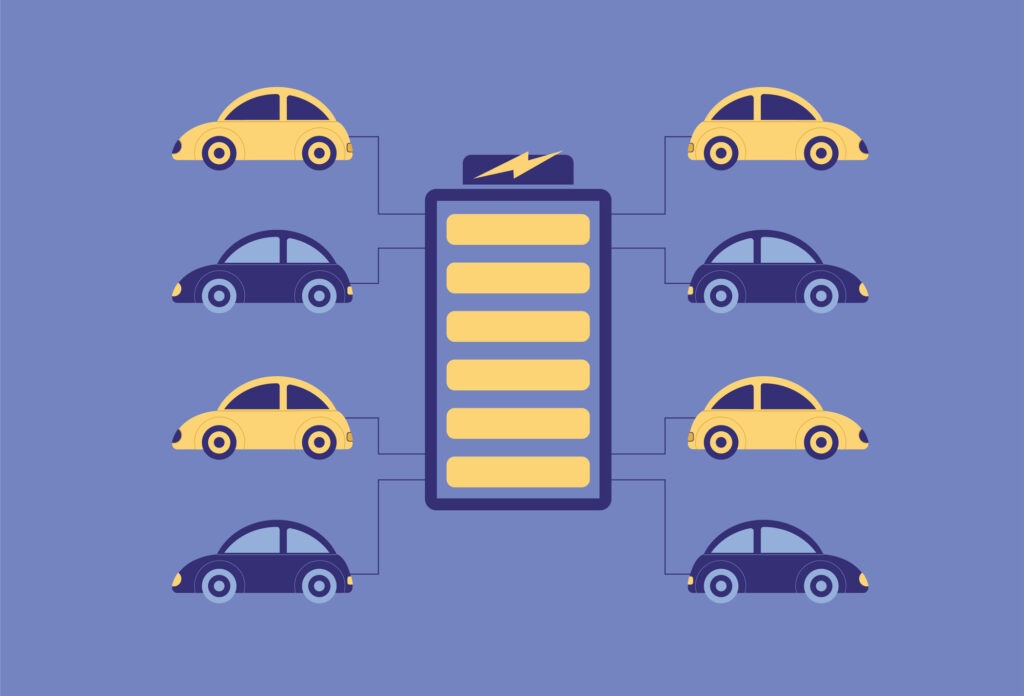Electrified powertrains dominate as EU registrations grow in August
28 September 2023

Electrified vehicles took a dominant position in the EU new-car market in August. Petrol’s market share plummeted in the face of rising competition from battery-electric vehicles (BEVs).
Combined deliveries of BEVs, full hybrids (HEVs), mild hybrids (MHEVs) and plug-in hybrids (PHEVs) outperformed petrol and diesel-powered models. Buyers appeared to opt for greener technologies, despite a difficult few weeks for sustainable transport.
New figures from the European Automobile Manufacturers’ Association (ACEA) reveal that the EU new-car market grew by 21% last month, reaching 787,626 registrations. This is the 13th consecutive month of growth, following the supply-chain crisis that impacted production and deliveries throughout most of 2022.
August is usually a quieter month, with several markets experiencing holiday slowdowns. However, double-digit gains across the continent’s biggest markets, including Germany (up 37.3%), France (up 24.3%) and Italy (up 11.9%) suggest a continued recovery, especially compared to a period when delivery backlogs started to clear.
Yet several markets experienced drops in registrations, suggesting that while a recovery is in progress, it is beginning to slow. Hungary experienced the biggest registrations loss in the month, down by 10.4%.
This was matched by Norway, which does not contribute to the EU figures but is part of the EFTA region. Ireland (down 0.5%), Slovenia (down 3%) and Lithuania (down 0.1%) also saw their markets slow.
While comparisons with 2022 appear favourable, August was down by 17% compared to 2019, before the COVID-19 pandemic impacted the market.
In the year-to-date, EU registrations were up by 17.9% compared to the first eight months of last year, with 7.1 million new cars taking to the roads across. Despite this improvement, figures were still down 21.4% in comparison with 2019.
Despite its weaker performance in August compared to the rest of the big four markets, Spain continues to lead the way this year, with registrations up 20.5%. Italy (20.2%), France (16.6%) and Germany (16.5%) all performing well too.
Electrified powertrains pull ahead
Despite recent news, August’s ACEA registration figures heralded a changing of the guard in the automotive industry. Electrified powertrains, including HEVs, MHEVs, PHEVs and BEVs dominated the market with a combined 52.3% share.
Internal-combustion engine (ICE) models took a lower position in the month, thanks to a significant fall in petrol’s market share. The automotive industry is continuing to adapt to new propulsion technologies, despite mixed messages from European governments in recent weeks.
The European Council has suggested watering down Euro 7 proposals, keeping existing test conditions and emissions limits as established in Euro 6. Outside of the EU, the UK has delayed its new petrol and diesel ban from 2030 to 2035.
This turmoil does not seem to have impacted the immediate adoption of electric technology, however. The market experienced one of its strongest-ever performances, at the detriment of petrol and diesel engines.
BEVs saw the biggest improvement in August with registrations up 118.1%, and market share reaching a new height of 21%. The BEV figures were helped by a big uptake in Germany, where registrations increased 170.7% in the month. Accounting for 31.7% of new-car registrations, BEVs took the lead ahead of petrol and diesel.
This eye-catching performance may have been skewed by the ending of commercial incentives at the beginning of September, pushing registrations forward into August. Belgium also saw a big increase in all-electric deliveries, up 224.5%, albeit with a smaller number of units than its neighbouring market.
With EU BEV registration figures close to a million in the year to date, demand for all-electric models has clearly increased. BEVs are also closing in on the hybrid market, which used to lead electrified vehicles in the fuel-type split. HEVs and MHEVs took a 23.9% market share in August up 1.4% year on year.
Meanwhile, PHEVs struggled last month. Even as registrations rose 5.5%, market share fell by 1.1% to 7.4%. This was not helped by a 41.1% fall in Germany as buyers rushed to complete their BEV purchases before the incentives changed.
ICE starts melting
Petrol, once the staple of drivers across the EU, felt the impact of the BEV surge, with its market share dropping rapidly. From 38.7% in August 2022, the technology accounted for under a third (32.7%) of EU registrations last month.
This is despite a 2.1% increase in deliveries. A solid performance in Italy (up 25.3%) and France (up 21.5%) primarily drove this growth, while most of the bloc’s markets declined. Yet with the BEV incentive distortion affecting the German market, it remains to be seen whether the tables truly have turned in favour of electrified technology, especially BEVs.
It appears that the ICE market can no longer rely on diesel to prop up its registrations. While petrol increased its deliveries in August, diesel registrations declined once again, this time by 6% to take 12.5% of the EU market. Only PHEVs, and the ‘others’ category, which includes liquid petroleum gas (LPG), natural gas vehicles (NGVs), and fuel-cell electric vehicles (FCEVs) recorded lower numbers.
In July, the ‘other’s category held the middle ground between electrified vehicles and ICE models, allowing the latter to keep hold of its market-leading position by the slimmest of margins. The 2.5% afforded to the sector in August, however, had no bearing on the leading technology, highlighting the power shift in the automotive industry.
What to expect
According to the latest EV-volumes.com forecast, the European new-car market (including Central and Western Europe) can expect to keep seeing year-on-year growth until 2030. However, this will be on a declining trend with 2023 predicted to end 11.1% up on 2022. Following this, the region will see registrations increase by only 0.3% in 2030.
The region’s new-car market is then forecast to shrink in 2031 and 2032 by 3.7% and 2.7% respectively. Year-on-year growth will likely return in 2033 (up 1.3%), 2034 (up 2.8%) and 2035 (up 1.8%), at which point the sale of new petrol and diesel passenger cars will end.
EV-volumes.com expects that by the end of this year, BEVs and PHEVs will account for a combined 23.5% of new-car registrations in Central and Western Europe. In 2025, this figure is expected to rise to a third (33.3%), then reach 70% in 2030 and 94.9% in 2035.
While these shares are slightly lower than previously expected, the volume of BEVs and PHEVs is higher for 2034 and 2035. This can be attributed to a weaker PHEV outlook, particularly in Germany where incentives were removed. There is also the delay to the UK’s ICE ban, which means a stay of execution for petrol and diesel.



